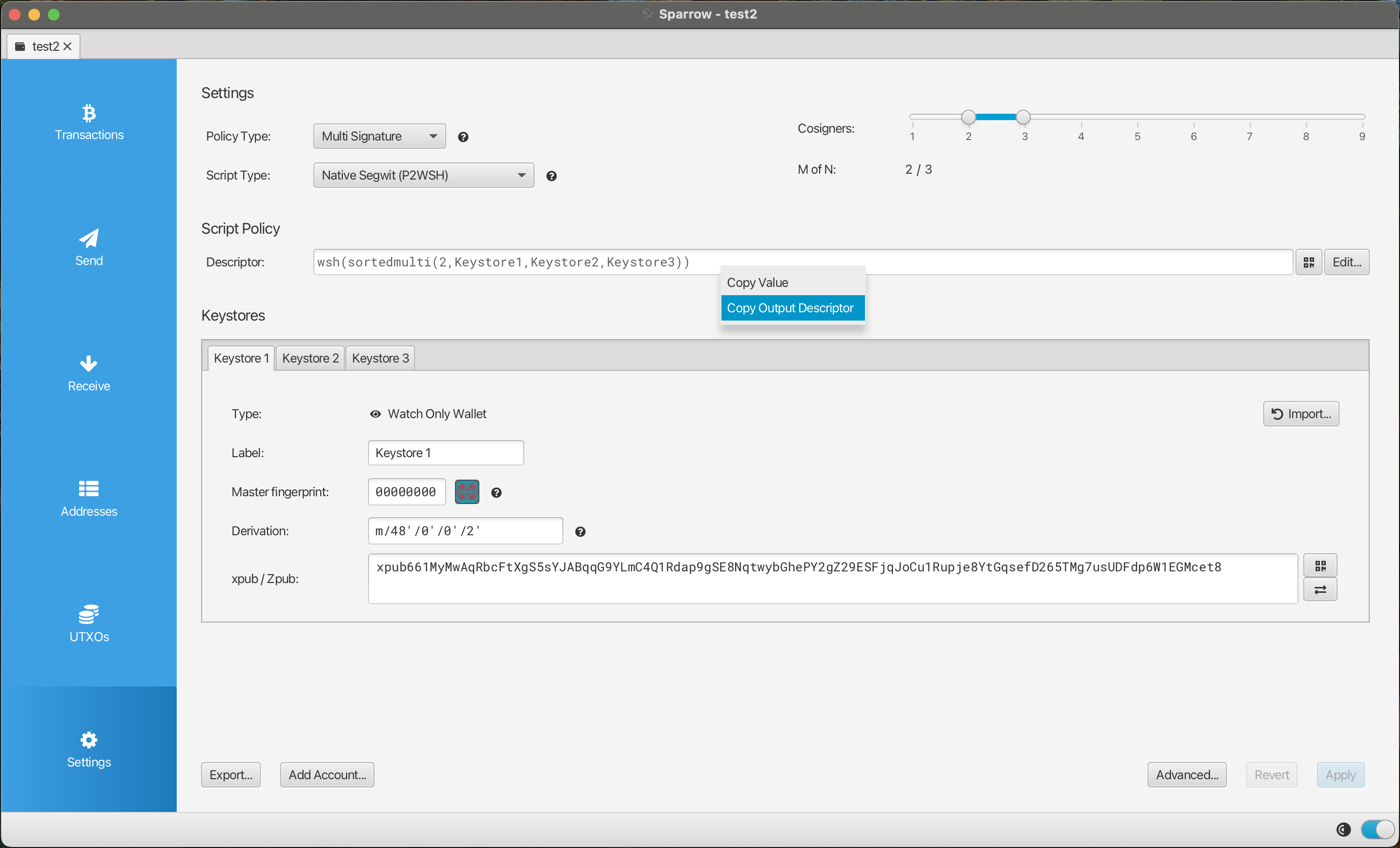Looking to integrate your collaborative custody Unchained Vault with Bitcoin-only accounting software for seamless tax reporting? This guide walks you through connecting your Unchained Vault multisig wallet to Clams, automatically syncing your transaction history and calculating accurate cost basis.
Why Connect Unchained Vault to Clams?
An Unchained Vault provides collaborative custody with institutional-grade security, and when paired with Clams' Bitcoin-only accounting software, you get:
- Automatic transaction syncing using Output Descriptors
- Privacy - your wallet data stays on your device
- Lightning-fast setup - connect in under 2 minutes
- Collaborative custody visibility - track your secure multisig vault activity
- Tax-ready reports - with accurate cost basis calculations
Understanding Unchained's Collaborative Custody Model
Unchained Vault uses a 2-of-3 multisig configuration where:
- You hold 2 keys (providing full control)
- Unchained holds 1 key (for recovery assistance)
- You need 2 signatures to spend
This collaborative custody model means you maintain sovereignty while having professional support. Clams tracks all transactions from your vault, regardless of which keys were used to sign.
Before You Start
What You'll Need:
- An Unchained Vault account with an active vault
- Your vault's Output Descriptor
- Clams installed
- Sparrow Wallet (free, used to convert Unchained's config file to Output Descriptor format)
Important: Clams only needs your Output Descriptor for read-only access—never your private keys or seed phrase.
Note: Unchained may offer Output Descriptors as a direct download option in the future, which would eliminate the need for Sparrow in this process.
Unchained Vault Setup
The Setup Process: Since Unchained currently provides wallet config files (.json) rather than Output Descriptors directly, we'll use Sparrow Wallet as a free intermediary tool to convert the format. The entire process takes about 2 minutes: export from Unchained → convert via Sparrow → import to Clams.
Step 1: Export Your Wallet Configuration File from Unchained
- Log in to your Unchained account
- Navigate to your Vault
- Scroll down to the Vault tools section and choose the option to view and download your Wallet configuration file

Note: The wallet configuration file will have a .json extension.
Step 2: Convert Config File to Output Descriptor Using Sparrow
- Open Sparrow and using the File menu at the top of your screen, choose Import Wallet option
- Scroll down on the import modal and locate the Unchained Caravan Multisig
- Click the Import File button and select your Unchained Vault config file (.json extension)
- When your vault is added to Sparrow, navigate to the Settings tabs and right click on the Descriptor field under Script Policy and select the Copy Output Descriptor option

Note: The descriptor format will typically start with sh(sortedmulti(...)).
Step 3: Add Descriptor to Clams
- Open Clams and navigate to Connections → Add
- Select Descriptor
- Give your vault a descriptive label (e.g., "Unchained Cold Storage Vault")
- Paste your Output Descriptor you copied from Sparrow
- Click Save and Sync
Pro Tips for Unchained Vault + Clams
What Happens After Connection
Once your Unchained Vault is connected, Clams will automatically:
- Derive all multisig addresses associated with your vault
- Scan for transaction history across all derived addresses
- Calculate cost basis for every transaction and for the balance as a whole
- Display your complete transaction history
- Automatically detect, label and account for transfers between your connected wallets
Best Practices
- Always verify you're copying the Output Descriptor, not private keys
- Keep your descriptor backup secure - while it's read-only, it does reveal all your addresses
- If you have multiple vaults with Unchained, connect each one separately in Clams
Organization Tips
- Use descriptive vault names in Clams that match your Unchained setup (e.g., "Unchained Retirement Vault", "Unchained Business Vault")
- Label transactions in Clams for better record-keeping and tax preparation
Troubleshooting
- If transactions aren't appearing, verify you copied the complete descriptor from Sparrow
- The descriptor should include all co-signer keys in your multisig configuration
Next Steps
- Review imported transactions for accuracy
- Add custom labels to improve organization
- Set up additional connections to capture all your Bitcoin transactions
- Generate tax reports when needed
Need Help?
Having trouble with your Unchained Vault integration? We're here to help:
- Join our Discord community
- Email us directly: hello@clams.tech